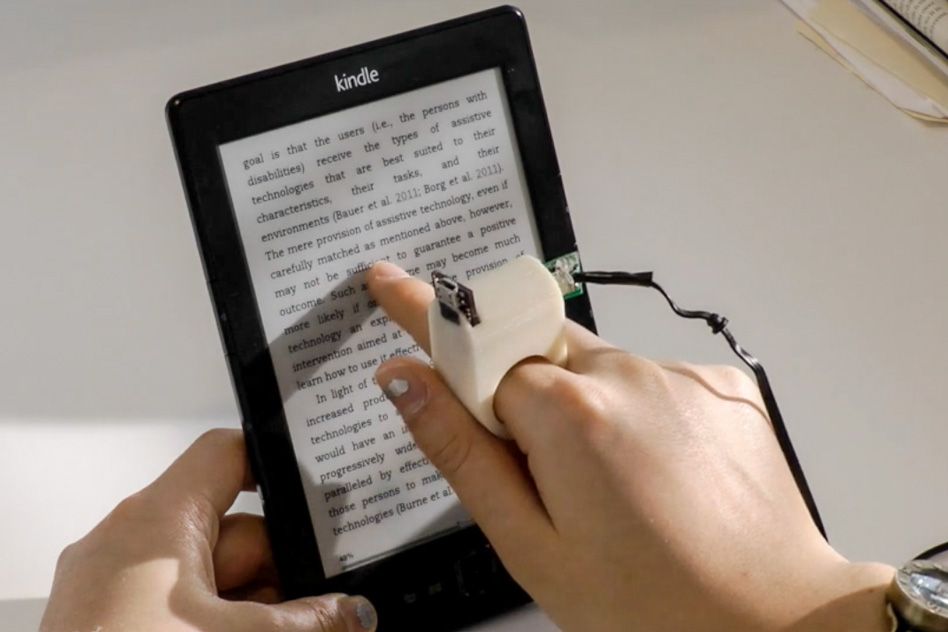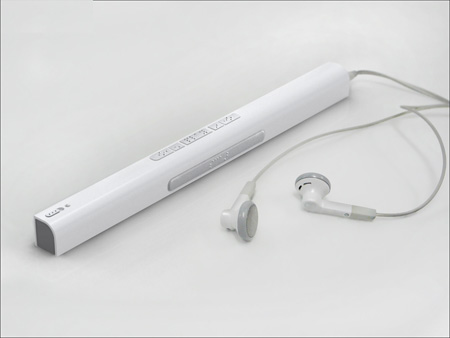OCR Devices for the Blind: Changing Print to Speech in Real-Time
OCR Devices for the Blind: Changing Print to Speech in Real-Time
Blog Article
Empowering Self-reliance With Assistive Modern Technology for the Blind
The integration of assistive technology into the lives of individuals with visual impairments represents a significant development in advertising independence and self-sufficiency. From cutting-edge display readers to sophisticated clever canes, these tools not only boost everyday navigation and communication yet also equip individuals to involve meaningfully in various facets of life. As we check out the myriad benefits and real-world applications of these innovations, it becomes vital to take a look at the hidden elements that add to their efficiency and the potential for future advancements in this vital area.
Overview of Assistive Modern Technology

The growth of assistive innovation is based in principles of inclusivity and empowerment. Developments in software program, equipment, and sensory enhancements supply customers with choices customized to their specific needs. From screen visitors that transform text to speech, to responsive devices that communicate info with touch, these tools transform the way people involve with their environments.
Along with sensible applications, assistive technology promotes better social inclusion and involvement in numerous sectors, consisting of education and learning and work (Voice-activated assistive devices). As r & d proceed to advance, the capacity for assistive technology to additionally enhance the lives of aesthetically impaired people stays promising, leading the way for a more equitable society where every person can prosper
Kinds of Assistive Instruments
A range of assistive devices have actually arised to sustain people with aesthetic problems, each created to satisfy details demands and enhance day-to-day performance. These gadgets range from low-tech remedies to modern technologies, giving diverse choices for users.
Low-tech devices include magnifiers and large-print products that assist in reading and writing. Braille tools, such as Braille styluses and slates, allow responsive reading and communication. Orientation and flexibility aids, like white canes, assist users browse their atmosphere securely.
On the higher end of the range, electronic magnifying systems and screen readers provide significant support. Digital magnifiers enable individuals to expand text and photos on displays, while screen viewers transform electronic web content right into synthesized speech, assisting in access to info on computer systems and mobile phones.
Smartphone applications additionally play a vital role, giving functions like message acknowledgment and navigating aid. Wearable modern technology, such as clever glasses equipped with increased fact, is becoming a promising device to boost situational awareness.
Benefits of Assistive Technology
The integration of assistive innovation dramatically boosts the lifestyle for people with aesthetic disabilities. These technologies encourage users by promoting freedom, allowing them to browse their settings much more efficiently and do daily tasks with greater convenience. Display readers and magnifying software program permit people to gain access to digital details, promoting specialist and instructional opportunities that might have formerly been out of reach.
In addition, assistive devices such as wise walking sticks and GPS applications provide real-time navigating assistance, improving wheelchair and safety. This raised freedom not just boosts self-worth but also urges social interaction, enabling individuals to take part more fully in their neighborhoods.
Assistive innovation likewise assists in interaction, helping customers attach with others via voice acknowledgment and text-to-speech applications. This capability is important for keeping relationships and accessing critical info.
Additionally, the customization options available with lots of assistive modern technologies guarantee that individuals can customize tools to their specific demands, further improving functionality and efficiency. On the whole, the advantages of assistive innovation for individuals with visual disabilities are profound, advertising a more inclusive culture where everybody can seek their goals and goals.
Case Research Studies and Success Stories
Highlighting the transformative influence of assistive technology, countless situation studies show exactly how individuals with aesthetic disabilities have efficiently incorporated these tools into their everyday lives. One engaging example includes an university pupil that made use of screen analysis software application to browse scholastic materials and online sources successfully. This innovation not only promoted her education yet also improved her self-confidence in taking part in discussions and team jobs.
One more situation study includes a professional who uses a mobile phone application created for navigating and things recognition. By utilizing this app, he has gained back autonomy in both his read more individual and work environments, enabling him to commute individually and engage with coworkers better.
In addition, a senior citizen shared her experience with braille e-readers, which allowed her to access a large range of literary works and remain gotten in touch with her community with publication clubs.
These success tales underscore the crucial role of assistive innovation in cultivating self-reliance, enhancing lifestyle, and advertising social integration for people with aesthetic problems (Mobility aids for visually impaired users). By embracing these cutting-edge tools, users can overcome difficulties and confiscate possibilities that add to their individual and professional gratification

Future Trends in Assistive Modern Technology
Advancement in assistive innovation is poised to redefine the landscape of support for individuals with visual disabilities. Arising trends stress the combination of artificial knowledge (AI) and machine knowing, which boost the functionality of gadgets that aid with navigating and info availability. For example, AI-driven applications are now efficient in analyzing aesthetic information in real-time, making it possible for users to involve with their environment more separately.
Moreover, the advancement of wearable innovation is advancing swiftly. Smart glasses outfitted with increased truth (AR) can offer audio summaries of environments, transforming just how users interact with public areas. These devices not just advertise autonomy but also foster social incorporation.
Additionally, the Web of Things (IoT) is making homes smarter, enabling smooth connectivity in between daily appliances and assistive gadgets. This connectivity equips customers by enabling automated actions and voice-activated controls tailored to specific requirements.
Verdict
To conclude, assistive technology plays an essential role in empowering people with aesthetic impairments by boosting their freedom and engagement with their surroundings. The diverse series of tools and applications available not just helps with navigation and interaction but likewise promotes social combination and chances for individual and professional development. As improvements continue in this area, the possibility for enhancing the find out here now high quality of life for those with visual problems will certainly expand, cultivating higher freedom and empowerment.

Report this page